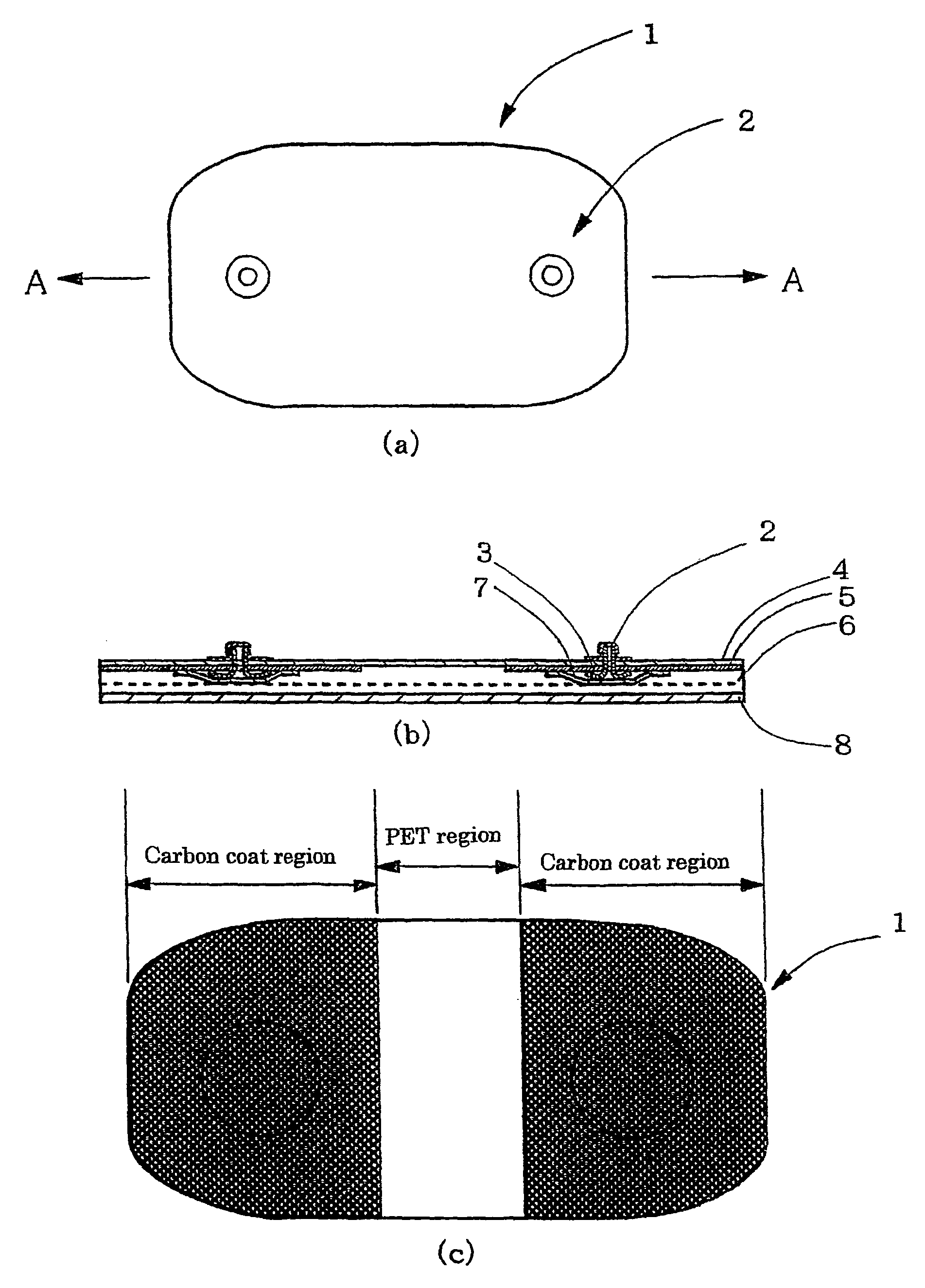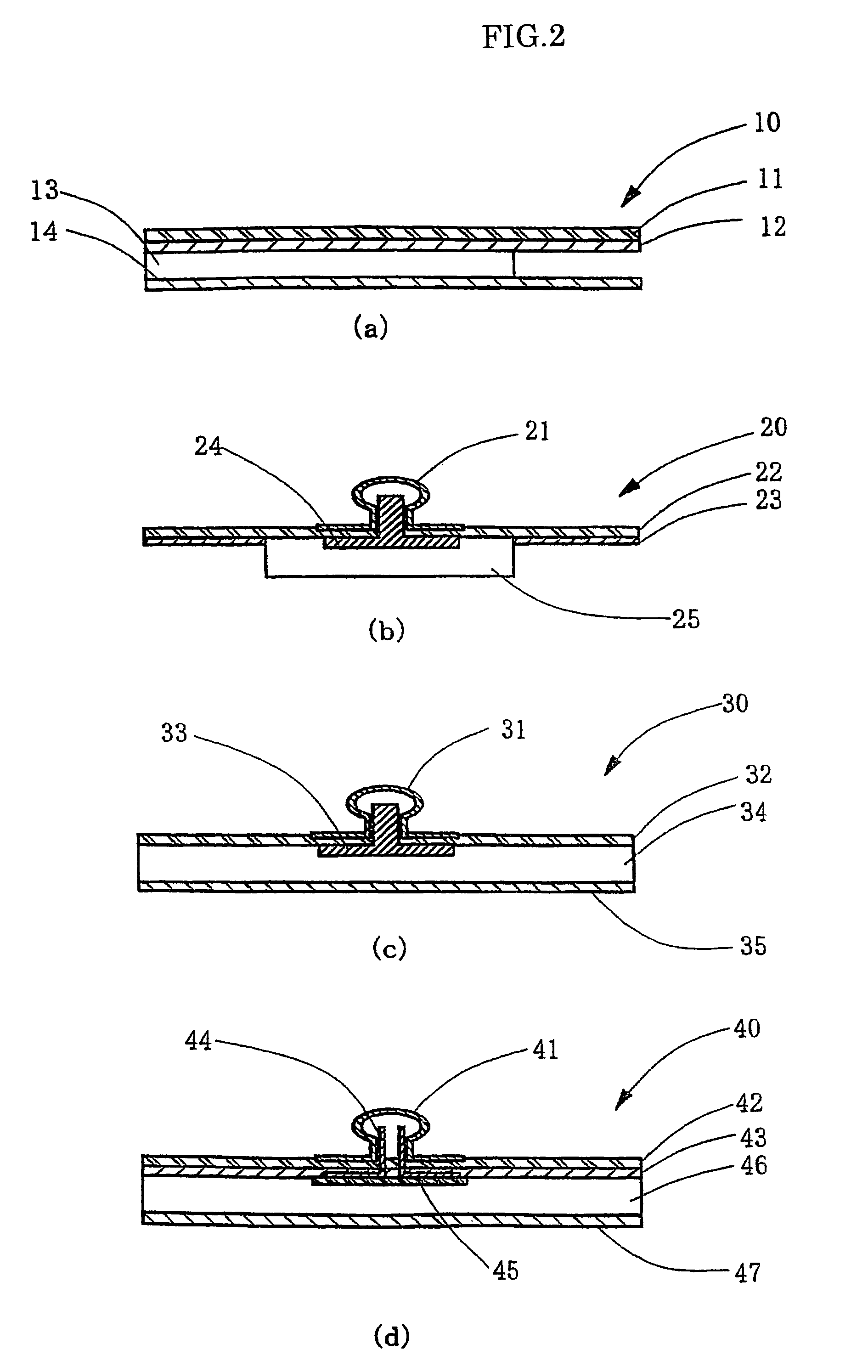Gel adhesive compositions, method of making, and use thereof
a gel adhesive and composition technology, applied in the field of gel adhesive compositions, can solve the problems of difficult to use oleaginous adhesives as conductive adhesives on electrodes for use on organisms, difficult to apply tape, and rashes, etc., to achieve excellent storage stability, stable qualities, and easy to handle
- Summary
- Abstract
- Description
- Claims
- Application Information
AI Technical Summary
Benefits of technology
Problems solved by technology
Method used
Image
Examples
examples
(Preparation of PVA Solution)
[0131]The amphipathic polymers, 20% aqueous solution of PVA having low saponification degree (commercially available as JMR-10M (saponification degree 65%) from Japan Vam & Poval Co., Ltd.) (PVA solution 1) and 20% aqueous solution of vinyl pyrrolidone / vinyl acetate copolymer (commercially available as Luviscol VA73 a molar ratio of vinyl pyrrolidone:vinyl acetate of 7:3 from BASF Japan, Ltd.) (VA solution) were first prepared.
examples 1 and 2
[0132]Using a stirring / mixing apparatus in which temperature is controlled within the range of 30° C. to 40° C., A1 parts by weight of PVA solution 1 and B parts by weight of ion exchange water were mixed followed by stirring and dissolving until they uniform, further followed by adding D parts by weight of glycerin as a moisturizer and stirring until likewise uniform. Next, to said apparatus, E parts by weight of acryl amide as a monomer was added and, after stirring for some minutes, F parts by weight of sodium chloride as electrolyte was added thereto and as crosslinkable monomer, G parts by weight of polyethylene glycol dimethacrylate (BLENMER PDE-400: NOF Corporation) was added and was stirred until completely dissolved. To 100 parts by weight of obtained mixture liquid 3, as polymerization initiator, 0.15 parts by weight of 1-(4-(2-hydroxyetoxy)-phenyl)-2-hydroxy-2-methyl-1-propane-1-on (commercially available as IRGACURE 2959 from Ciba Specialty Chemicals) was added and milk-...
examples 3 to 10 , 12
Examples 3 to 10, 12, and 13
[0133]Using a stirring / mixing apparatus in which temperature is controlled within the range of 30 to 40° C., A1 parts by weight of PVA solution 1 or A2 parts by weight of VA solution and B parts by weight of ion exchange water were mixed followed by stirring and dissolving until uniform, further followed by adding C1 parts by weight of emulsion of acrylic acid ester copolymer (solid content 50% by weight, trade name “POLYZOL PSA SE-1730”, manufactured by Showa Polymer Co., Ltd.) or C2 parts by weight of emulsion of acrylic acid ester copolymer (solid content 50% by weight, trade name “VINYBLAN ADH-1048” manufactured by Nissin Chemical Industry Co., Ltd) or C3 parts by weight of emulsion of acrylic acid ester copolymer as a water insoluble polymer (solid content 60% by weight, trade name “VINYBLAN ADH-893 T”, manufactured by Nissin Chemical Industry Co., Ltd) was added and was stirred until uniformly dispersed (it was judged as uniform when unevenness of w...
PUM
| Property | Measurement | Unit |
|---|---|---|
| thickness | aaaaa | aaaaa |
| temperature | aaaaa | aaaaa |
| temperature | aaaaa | aaaaa |
Abstract
Description
Claims
Application Information
 Login to View More
Login to View More - R&D
- Intellectual Property
- Life Sciences
- Materials
- Tech Scout
- Unparalleled Data Quality
- Higher Quality Content
- 60% Fewer Hallucinations
Browse by: Latest US Patents, China's latest patents, Technical Efficacy Thesaurus, Application Domain, Technology Topic, Popular Technical Reports.
© 2025 PatSnap. All rights reserved.Legal|Privacy policy|Modern Slavery Act Transparency Statement|Sitemap|About US| Contact US: help@patsnap.com



